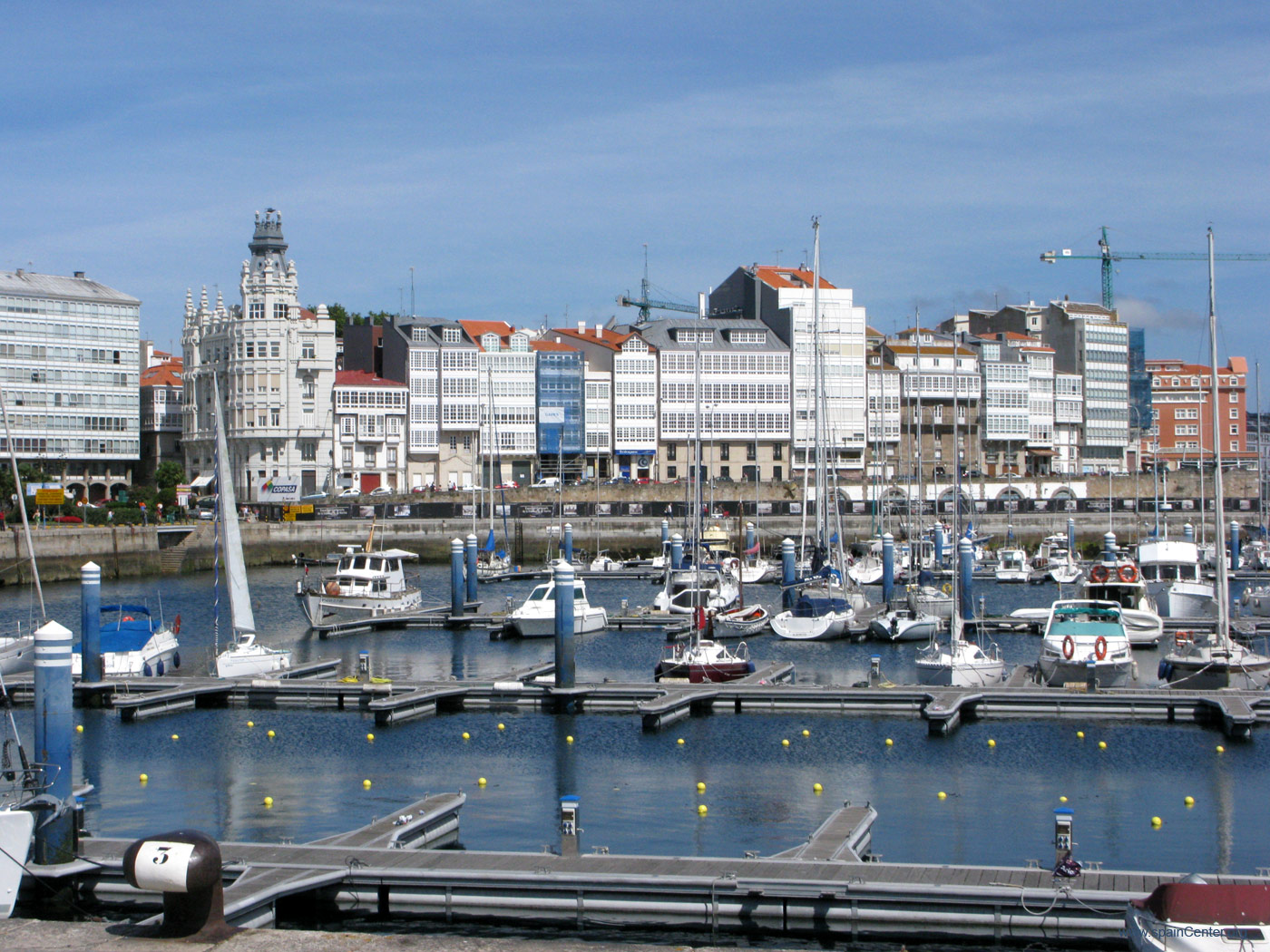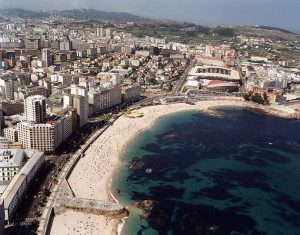Featured links and videos
Vigo and Baiona
 VIGO
VIGO
Known as “the Olivic city”, Vigo is the largest city in Galicia.
It enjoys a temperate microclimate of mild winters and warm summers. This is why it is the Galician city with more sunny days and less rain.
Samil beach stands out among Vigo’s numerous beaches of fine white sand and from there you will be able to see Cies Islands and Toralla Isle.
Another tourist attraction is the tasting of their famous oysters, which can be found in the very central area and, as tradition dictates, accompanied by a glass of the excellent Albariño white wine.
 BAIONA
BAIONA
Baiona is a small fishing village to the south of Vigo.
It is known, among other things, because of its climate, its beautiful beaches (more than four kilometres long), its Yacht Club and the location of the Parador de Turismo.
Its old quarter is worth a visit because of its small fishermen’s houses, low archways and stone columns. In 1993 the village was declared of Historic-Artistic interest. Do not miss it!
Islas Cíes
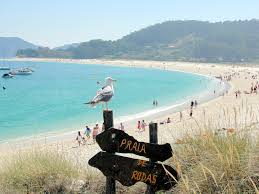 The Cíes consist of three islands, two of which are linked by a long strip of sand known as Rodas beach.
The Cíes consist of three islands, two of which are linked by a long strip of sand known as Rodas beach.
They can be reached by ship departing from Cangas do Morrazo or Vigo.
They were declared a natural reserve in 1980 and are included in the Atlantic Islands of Gallician National Park having a status of ZEPA, which stands for Bird Special Protection Zone. Moreover, dolphins and sea turtles can be often spotted and also numerous sea anemones and urchins can be observed a few metres from the shore.
 A true paradise! No wonder Rodas Beach was declared to be the best beach in the world in 2007 by the British newspaper The Guardian.
A true paradise! No wonder Rodas Beach was declared to be the best beach in the world in 2007 by the British newspaper The Guardian.
Ezaro waterfall (Dumbria)
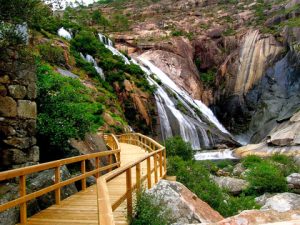 Ezaro waterfall, located in the municipality of Dumbria in the province of A Coruña, is one of the largest waterfalls in Europe.
Ezaro waterfall, located in the municipality of Dumbria in the province of A Coruña, is one of the largest waterfalls in Europe.
It is formed when the river Xallas flows into the sea with a spectacular fall (150 metre high), 40 metres balance. It is set amidst a wind-swept rocky landscape within close proximity to the Atlantic Ocean, which it joins as a small scale estuary. You should also notice there are calm beaches full of bright white sand, very friendly for families under good weather.
The Xallas is the only river in Europe that flows into the sea as a waterfall and there is a reservoir nearby used for generating power. When it opens its gates the flow increases spectacularly and it is a unique sight worth watching.
Next to it we find Mount Pindo, full of legendary stories related to magic rituals and prehistoric tales. This is a highly recommended visit.
Death Coast and Cape Finisterre
 The Death Coast extends from the villages of Muros and Malpica, in the northwest of Galicia.
The Death Coast extends from the villages of Muros and Malpica, in the northwest of Galicia.
It received this name because there have been many shipwrecks along its treacherous rocky shore, being that of the HMS Serpent, the most famous and dramatic because it caused the loss of 173 of her crew of 176 men as a result of a navigation error during a storm. They were all buried in a nearby cemetery now known as El Cementerio de los Ingleses (The English Cemetery), which can still be visited. As a result of this terrible shipwreck a lighthouse was built in the area (Cape Vilan Lighthouse in Camariñas), the first electric one in Spain.
 The Death Coast comes to an end in Finisterre, on the cape of the same name, and is the final destination of many pilgrims on the Way of Saint James who, once they arrive in Santiago, decide to continue their route as far as Finisterre, past Muxia, where the well-known shrine of VIRXEN DA BARCA can be visited. Finisterre is a World Heritage Site.
The Death Coast comes to an end in Finisterre, on the cape of the same name, and is the final destination of many pilgrims on the Way of Saint James who, once they arrive in Santiago, decide to continue their route as far as Finisterre, past Muxia, where the well-known shrine of VIRXEN DA BARCA can be visited. Finisterre is a World Heritage Site.
Fiesta del Marisco – O Grove
The festival is celebrated in the town of O Grove (Rias Baixas);
Is an interesting gastronomic and cultural event, which enhances one more typical products of our land: THE SEAFOOD.
During the festival there are retail seafood and fish at popular prices, prepared and served by the inhabitants of the place;
Excellent products attract each year thousands of people, becoming the town into a referente, and here the name of “seafood Paradise”; in addition to tastings, music and dances liven up the party…
All a fun.
Every year, in the month of october
Romería Vikinga – Catoira
Every first Sunday of August thousand of people attend CATOIRA, to witness this fun popular party.
The inhabitants of Catoria dress up of Viking warriors, and the pirate attacks is represented to the people.
The festival focuses on the emblematic place of the “Tower of the West”;
It´s a few remains of two towers and a chapel, which at the time was a fortified
complex ( 1st century BC) .
On board a replica Viking slip (11TH CENTURY), become the invaders fron the north with the objective of taking posesión of the Torre, and the inhabitants are trying to resist the attack.
There is a battle, where the partecipants have just soaked in wine….
After the battle, all together enjoy a meal of fellowship with product typical, accompanied by the sound of the bagpipes.
Xenerais da Ulla – Comarca da Ulla
In the region of “Ulla”, at the time of Carnaval, is when you can enjoy this festival, the most prominent in this region gives ULLA, and which is carried out from the first half of 19th century.
The “XENERAIS” are on horseback dressed as with precious military clothing, including carnaval decorations, as well as their horses. These clothers attract attention by its originality, colour, tradición and degree of elaboration, which make having a great value.
Figure recreate historical moments of armed clashes that were experienced in this region: the invasión of the army of Napoleón, or the Carlist war.
The “XENERAIS” throught parishes throughtout the day, accompanied by parades and partying.
Complete staging dialectical confrontations in pairs, taking advantage of making jokes and satires of local issues,politics and heart happened during the year.
It has been declared a Festival of tourist interest in Galicia.
A Rapa das Bestas – A Estrada
Sabucedo is a parish located in the south of the “ Concello de Estrada”, with an area of 5,9 km2; Has a single entily of poplation, and at presentt does not exceed 60 residents people. In Sabucedo, however, has one of the hightest manifestations of authenticity, identity, and collective will of all those who make up our culture legacy: A RAPA DAS BESTAS OF SABUCEDO.
The “rapa” begins recalling ancestral link of the horses with the divine. During the sunrise mass, is requested protection to San Lorenzo, for animals and all people who partecipate in the festival. Then, neighbors and visitors climbs to the mountain searching the horses, working groups bringing together the herds. Finally, on Saturday they lead in a big “fence” to the village;
The most spectacular of the feast is the “ curro” where the “AILOTADORES” and horses confront technique and strength melee, to immobilize the animal and finally cut her mane.
There is an area of camping, and a surprising offer of nightlife.
A Coruña
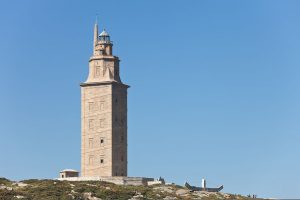 A Coruña is a beautiful and elegant city to the north of Santiago de Compostela and known as the balcony of the Atlantic Ocean. One of its most beautiful landmarks is “La Torre de Hercules” (The Tower of Hercules), a Roman lighthouse which has been in continuous operation since possibly the 2nd century AD and has been declared by UNESCO as a World Heritage Site.
A Coruña is a beautiful and elegant city to the north of Santiago de Compostela and known as the balcony of the Atlantic Ocean. One of its most beautiful landmarks is “La Torre de Hercules” (The Tower of Hercules), a Roman lighthouse which has been in continuous operation since possibly the 2nd century AD and has been declared by UNESCO as a World Heritage Site.
Other landmarks include:
- María Pita Square in the old quarter, with the statue of the local heroine of the same name and the City Hall.
- San Antón Castle with its archaeological museum.
- The Promenade of Riazor Beach in the centre, 9 kilometres long and one of the longest in Europe.













